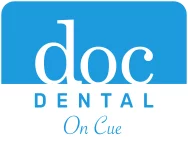Bruised Teeth & How to Avoid Them

Like other body parts, your teeth can get bruised. That might sound strange, but it’s true. The most common tooth traumas are chipping & getting knocked out altogether. If your tooth is hit with enough force, it can bruise & discolor & will certainly require a dentist’s attention.
The easiest way to tell if your tooth is bruised is if you have a dull pain that doesn’t go away. Though the pain typically won’t be as sharp as it is with other dental injuries, bruising can still be a serious issue. In some cases, the affected tooth or teeth will become more sensitive & the gums around the affected area can swell or even start to bleed. This is because, despite being referred to as a bruised tooth or a tooth sprain, the underlying issue is actually damage to the ligaments connected to your teeth.
Teeth may discolor when they’re bruised, like bruises on another body part. Unlike other bruises, which turn black & blue, a bruised tooth turns pink or gray. This is not the only cause of tooth discoloration, but no matter the reason for the discoloration you will want to seek a dentist’s advice. While it is possible that your tooth might go back to normal on its own, that is no reason to wait it out. If the tooth turns gray it may be permanently discolored & might require a root canal, making visiting a dentist even more urgent.
The best way to actively avoid bruising a tooth is to protect your teeth. If you play sports often, wear a mouthguard. If you have problems with grinding your teeth, stop that habit—if you do it unconsciously while you sleep, wear a nightguard! You should generally be protecting your teeth whenever possible, regardless of potential tooth bruising. Unfortunately, other causes of a bruised tooth include things that you might not be able to do anything about, like infections or illnesses. In any case, chronic tooth pain is always a good reason to visit the dentist. The good news is that if the cause is a bruised tooth, recovery is easy & should not take very long.
